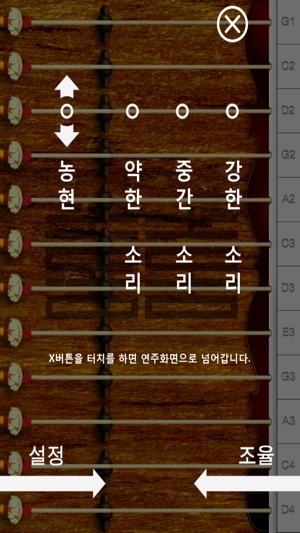價格:免費
更新日期:2013-03-15
檔案大小:12.5 MB
目前版本:1.1
版本需求:需要 iOS 4.3 或以上版本。與 iPhone、iPad 及 iPod touch 相容。
支援語言:英語, 韓語

Gayageum is a typical Korean string instrument. Its origin is traced back to the period of three kingdoms, whose chronicles reported that Gaya’s King Kasil ordered a famous musician, Uruk, to create it. As the kingdom of Gaya dwindled in power, Uruk moved and brought the instrument to Silla. From there, it expanded as a popular musical instrument throughout Korean history—unified Silla, Goryeo Dynasty, and Jogeon Dynasty periods—and is still played today. The instrument can be classified into two types of genres: Jeong-ak (court music) and San-jo (folk music).

- Sanjo Gayageum -

This is a modern-style gayageum used to perform San-jo, a musical genre developed in the nineteenth century. The San-jo gayageum features brilliant, technical solos for performers, who employ a particular vibrato called Nong-Hyun and often play consecutive notes in fast and changeable tempi. To allow for such variations in expression, the size of the instrument is smaller and modified into a box-like shape. Unlike the Yang-Idu in the Jeong-ak Gayageum, the strings of this instrument are suspended on the tail side of the board, and they are called Bong-Mi, meaning a phoenix’s tail.

***
This work was supported by ministry of culture, sports & tourism - Grant funded by the Korean Government(Korea Creative Contents Agency-2012-HE1405-No.R2012030134)
支援平台:iPhone
